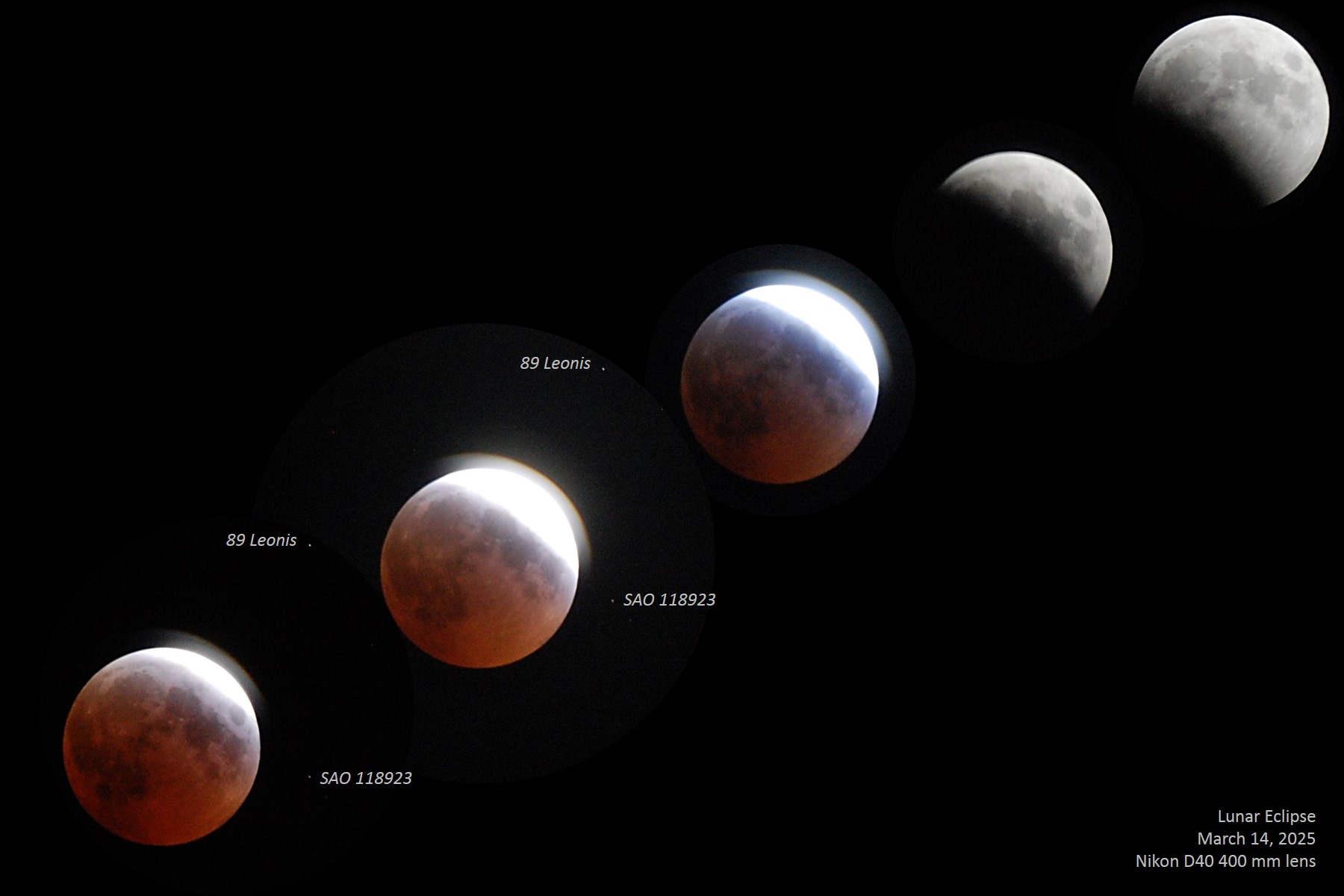The first eclipse season of 2025 occurs in March, comprising the usual two eclipses. This is the most common situation, namely that during one of the times of the year in which the nodes of the lunar orbit around the Earth line up with the syzygy of the Sun, Earth, and Moon, two eclipses result. The nodes are the points where the orbital plane of the Moon around the Earth intersects the orbital plane of the Earth's orbit around the Sun, so one of the nodes is called ascending and the other is descending. The more common situation is that during an eclipse season, there will be a moderately central lunar or solar eclipse followed two weeks later by a moderately central eclipse of the other kind. Less often, wee might see a very slight eclipse of type 1, then two weeks later an almost exactly central eclipse of type 2, and then two weeks later a third eclipse of type 1 again.
This March we have an instance of the two-eclipse season, the first being a central eclipse of the Moon visible most favorably from the Americas on March 14, followed by a partial solar eclipse visible from the European side of the northern hemisphere on March 29. For us in the eastern United States, the eclipse occurred in the hours immediately after midnight in the night between the 13th and 14th, centered around 3:00 a.m. EDT, which is 7:00 UT. It takes place high in the sky, just past the due south meridian, right on the border between Leo and Virgo. In this region, there are no particularly bright stars or clusters or other noteworthy objects that might be imaged during the totality with the unique opportunity to include a red Moon in the scene.
Our weather this evening started out quite nicely, with mostly clear skies and a touch of humidity, however as the eclipse progressed, the skies slowly became hazier with high clouds. We had a good view of the eclipsing Moon up until almost the point where totality begins, and then clouds moved in to completely cover up the Moon, never to be revealed again. These images reflect the evolution of the cloud cover, as can be seen by the decent views up to the last few percent of the Moon being covered; my montage starts with the Moon maybe 1/3 of the way into the umbra and ends with probably 97% of the Moon in the umbra.

This view shows the position of the Moon on the Leo side of the border between Leo and Virgo, at a time when a small part of the Moon was still in the penumbra, before clouds moved in to obscure the view. Unannotated view, Zoomed in view

